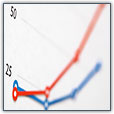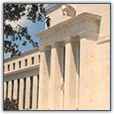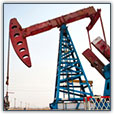View by year
2016

Drivers of Inflation Compensation: Evidence from Inflation Swaps in Advanced Economies
In this note, we provide a comparative analysis of inflation swaps for three advanced economies: the United States, the euro area, and the United Kingdom
DOI: https://doi.org/10.17016/2573-2129.28

"Low-For-Long" Interest Rates and Portfolio Shifts in Advanced Foreign Economies
For the past several years, interest rates in many advanced economies have been at historic lows. Although low interest rates have helped support recovery in these economies, persistently low rates have also raised concerns about increased incentives for risk-taking by investors to achieve higher yields.
DOI: https://doi.org/10.17016/2573-2129.27

Measuring Cross Country Monetary Policy Uncertainty
In previous work, we constructed a news-based index of U.S. monetary policy uncertainty (MPU) that captures the degree of uncertainty the public perceives about Federal Reserve policy actions and their consequences (Husted, Rogers, and Sun, 2016a). In this note, we extend that work to Canada, the Euro Area, Japan, and United Kindgom.
DOI: https://doi.org/10.17016/2573-2129.26

Causes of the Global Trade Slowdown
This note analyzes the striking slowdown in world trade in recent years. After documenting key features of this slowdown, we assess its causes, including to what extent it reflects recent cyclical weakness in global growth versus underlying long-term structural shifts in the world economy.
DOI: https://doi.org/10.17016/2573-2129.25

What's Driving the Recent Slump in U.S. Imports?
In this post, we explore what has been driving the recent slump in U.S. imports of non-oil goods.
DOI: https://doi.org/10.17016/2573-2129.24

Emerging Market Capital Flows and U.S. Monetary Policy
The years 2009-2011, immediately following the global financial crisis (GFC), were marked by a surge in capital flows to emerging market economies (EMEs) coupled with the aggressive loosening of monetary policy in advanced economies. These simultaneous developments led many observers to conclude that the highly accommodative policies of the Federal Reserve and other advanced-economy central banks were what triggered the wave of capital flows toward EMEs.
DOI: https://doi.org/10.17016/2573-2129.23

The Effects of Demographic Change on GDP Growth in OECD Economies
There has been a downward trend in economic growth in a number of advanced economies over the past few decades. This note assesses how much of this growth slowdown can be accounted for by demographic changes.
DOI: https://doi.org/10.17016/2573-2129.22

Measuring Monetary Policy Uncertainty: The Federal Reserve, January 1985-January 2016
We construct a news-based index of monetary policy uncertainty (MPU) to capture the degree of uncertainty the public perceives about Federal Reserve policy actions and their consequences
DOI: https://doi.org/10.17016/2573-2129.21

"Low-for-long" interest rates and net interest margins of banks in Advanced Foreign Economies
Since the global financial crisis (GFC), interest rates in many advanced economies have been low and in many cases are expected to remain low for some time.
DOI: https://doi.org/10.17016/2573-2129.20

The relationship between oil prices and inflation compensation
Noting the common decline in oil prices and long-run inflation compensation, many people have claimed that lower oil prices have contributed to the decline in inflation compensation.
DOI: https://doi.org/10.17016/2573-2129.19

Foreign Competition and Domestic Jobs: Evidence from the U.S. Trade Adjustment Assistance
Using data on the certified petitions for U.S. Trade Adjustment Assistance, I document that international trade unevenly affects reallocation and employment across U.S. states.
DOI: https://doi.org/10.17016/2573-2129.18

Predicting Fed Forecasts
Monetary policy decisions by the Fed's Federal Open Market Committee (FOMC) have attracted considerable attention in recent years, especially with quantitative easing through large-scale asset purchases, the introduction of forward guidance, and December's "lift-off" after seven years of a near-zero federal funds rate.
DOI: https://doi.org/10.17016/2573-2129.17

The Dollar in the U.S. International Transactions (USIT) Model
The dollar's 20 percent climb against a broad index of foreign currencies since the middle of 2014 has led to an increased focus on how dollar fluctuations affect the U.S. economy.
DOI: https://doi.org/10.17016/2573-2129.16

International Spillovers of Monetary Policy
International monetary policy spillovers have been the subject of much economic debate since at least the early interwar period, and formal modeling of monetary policy in an open economy dates back to the pioneering analyses of Mundell (1963) and Fleming (1962).
DOI: https://doi.org/10.17016/2573-2129.15

The Rise of Exporting by U.S. Firms
Over the last few decades global trade has expanded significantly, both in terms of the volume of trade as well as the number of varieties of goods traded across countries.
DOI: https://doi.org/10.17016/2573-2129.14
Disclaimer: IFDP Notes are articles in which Board economists offer their own views and present analysis on a range of topics in economics and finance. These articles are shorter and less technically oriented than IFDP Working Papers.